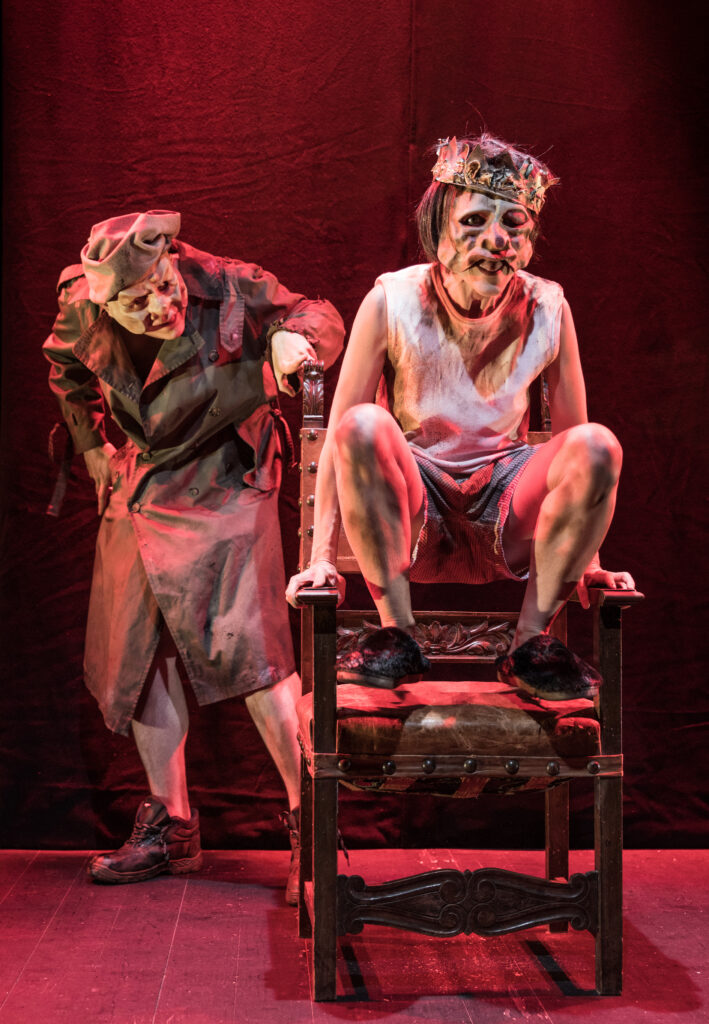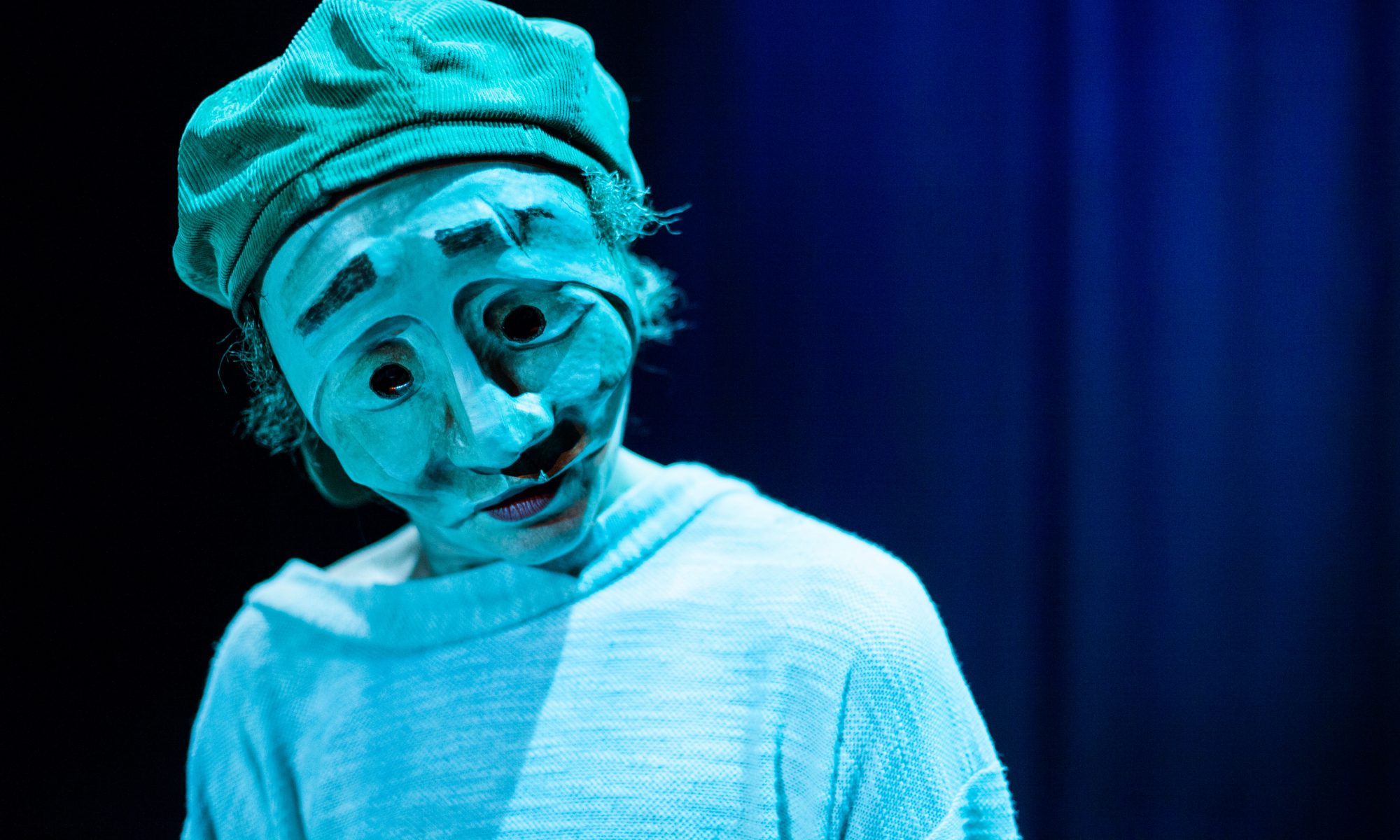ROTTEN HAMLET
A co-production by Teatro Strappato and Teatro delle Temperie
A fifty-year-old Hamlet invites the audience to take their seats and from a briefcase pulls out the golden crown that once belonged to his father. Once on stage, he lifts a dusty white cloth and reveals the ancient throne of Elsinore. Thus begins the performance in which a Hamlet who has survived the well-known Shakespearean events retraces the salient stages of his own dramatic history together with the audience, as if he were asking the spectators: “what would you have done in my place?” This is the mechanism of the play that, like a recurring nightmare, represents the story of Hamlet and his family.
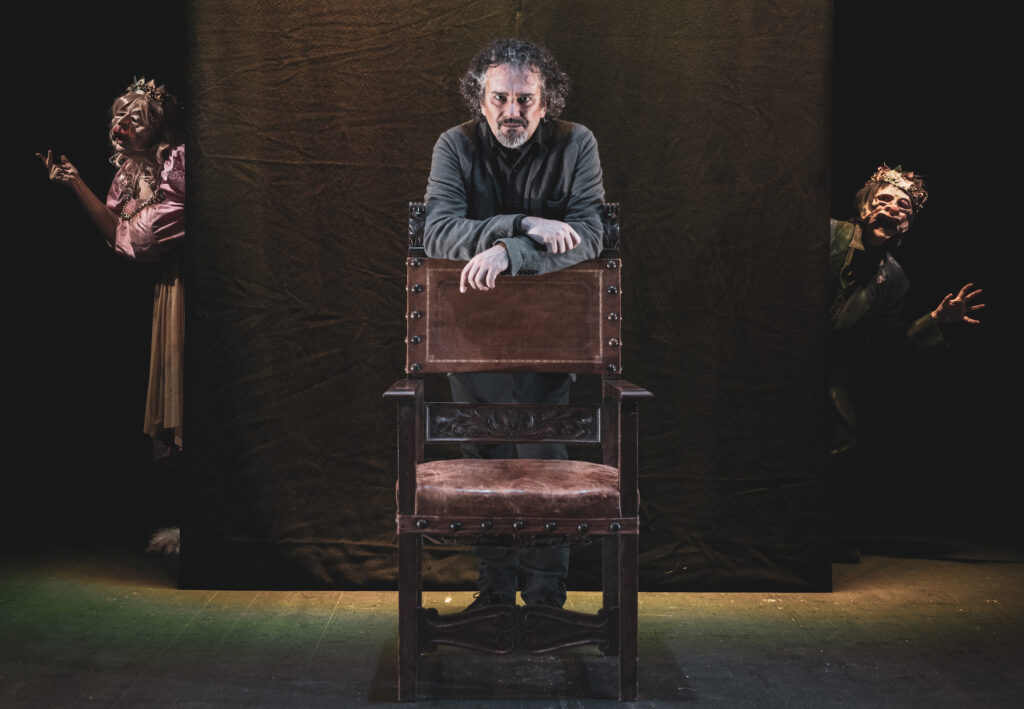
Ophelia, Polonius, the queen and King Claudius are, thanks to the marvellous original masks, characters deformed, worn out and transformed by the imagination of Hamlet himself, who continues, for centuries, to think about his own history and imagine possible solutions to his drama.
It is rotten, all rotten, the world in which Hamlet lived and lives. It is rotten, all rotten, the world in which we live today. This seems to suggest this very special version of Shakespeare’s Hamlet. The four key characters bear on their flesh (on their masks and costumes) the marks of the rot in which they live and of which they are part.
Hamlet relives his own recurring nightmare before the spectators’ eyes, as if he were the author and director of it. At the same time he himself relives all the passions and torments that characterise and have characterised his story.
Obviously there is no solution, obviously Hamlet will never find answers to his questions, but perhaps he can find in the sharing of his torments and questions, the purpose of his very long life as a survivor.
Like the Bard’s text which, still after 500 years, makes us question ourselves, our society and our human being.
In an alternation of extremely comic scenes and monologues of great passion and drama, the show, with an overflowing energy, drags the audience inside the Shakespearian drama with an extraordinary freshness, fun and passion.
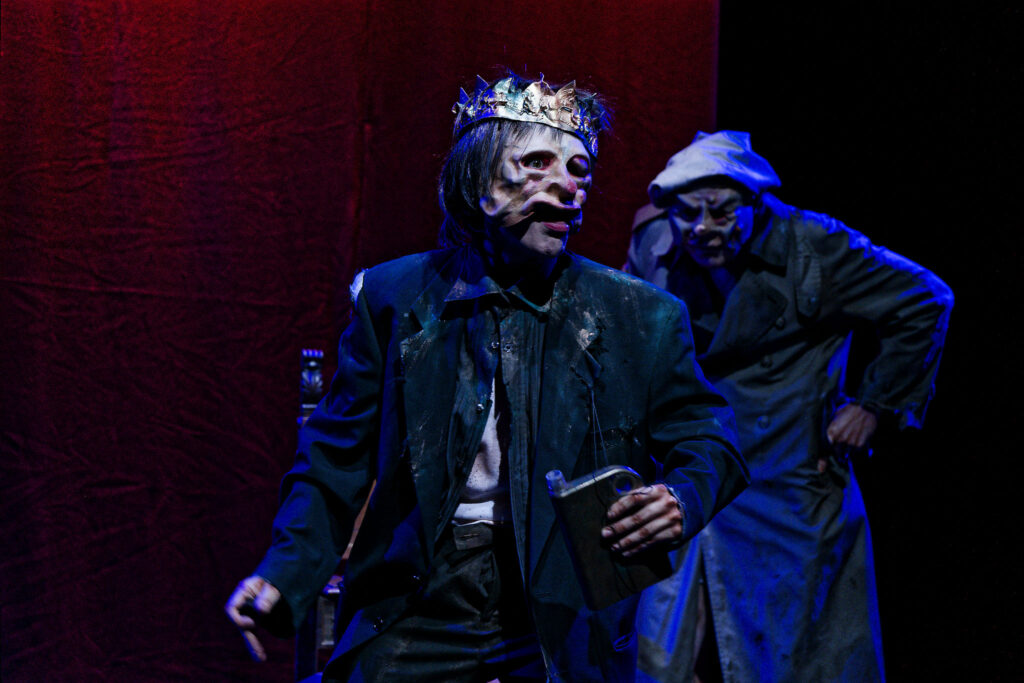
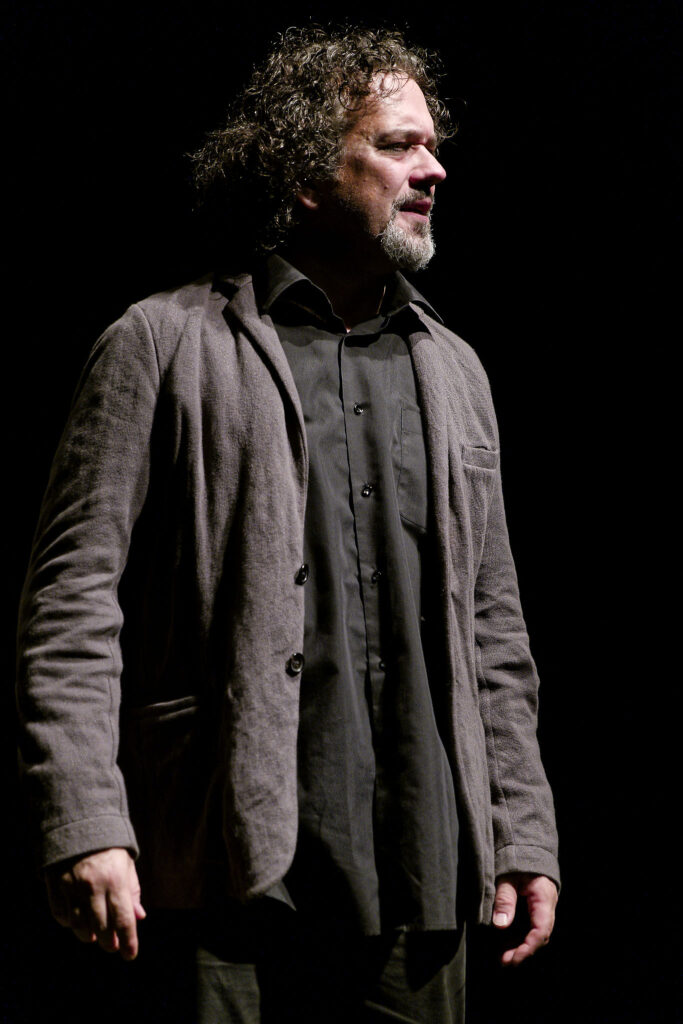
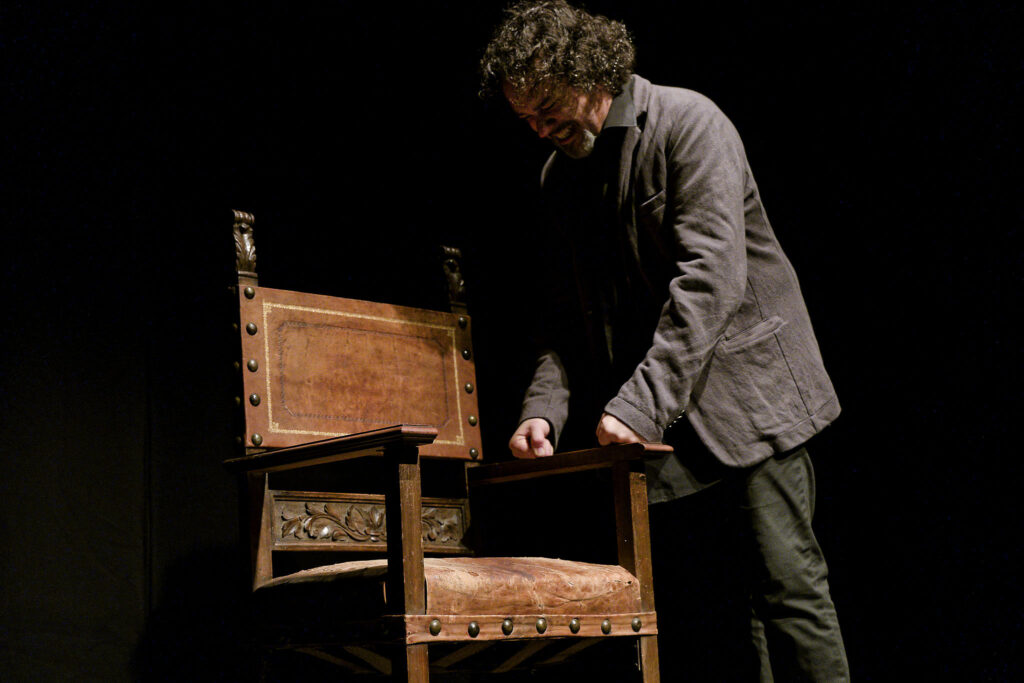
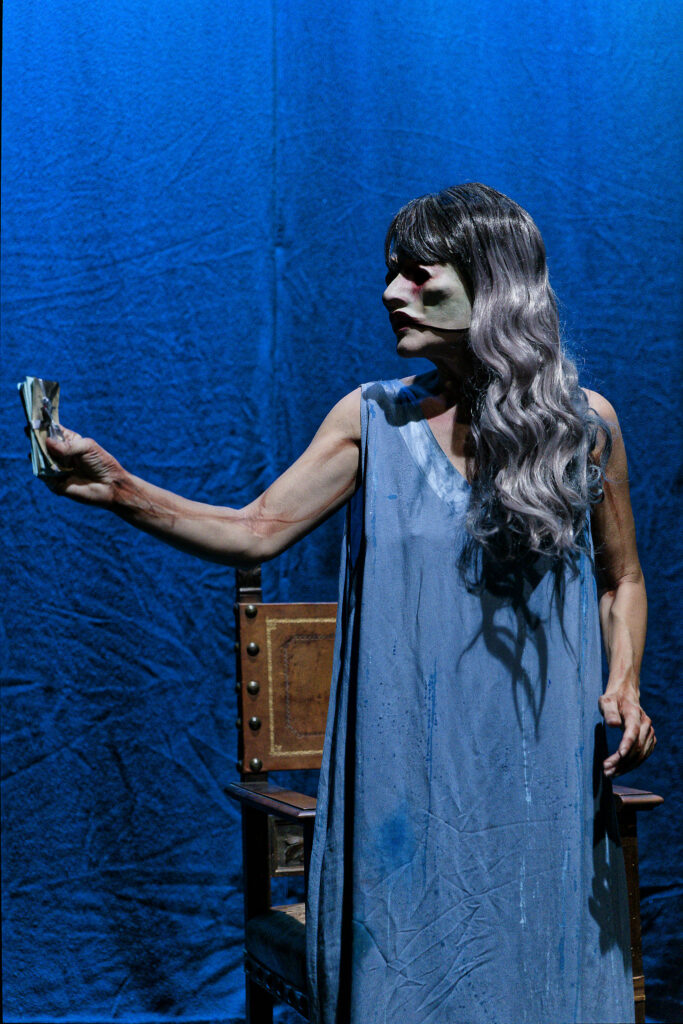
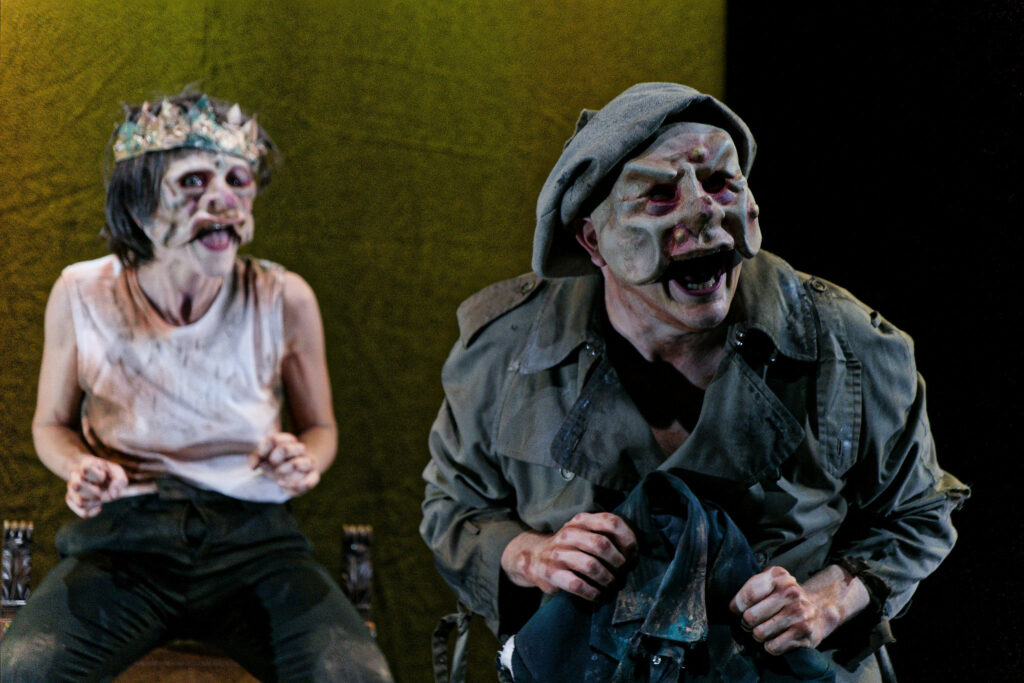
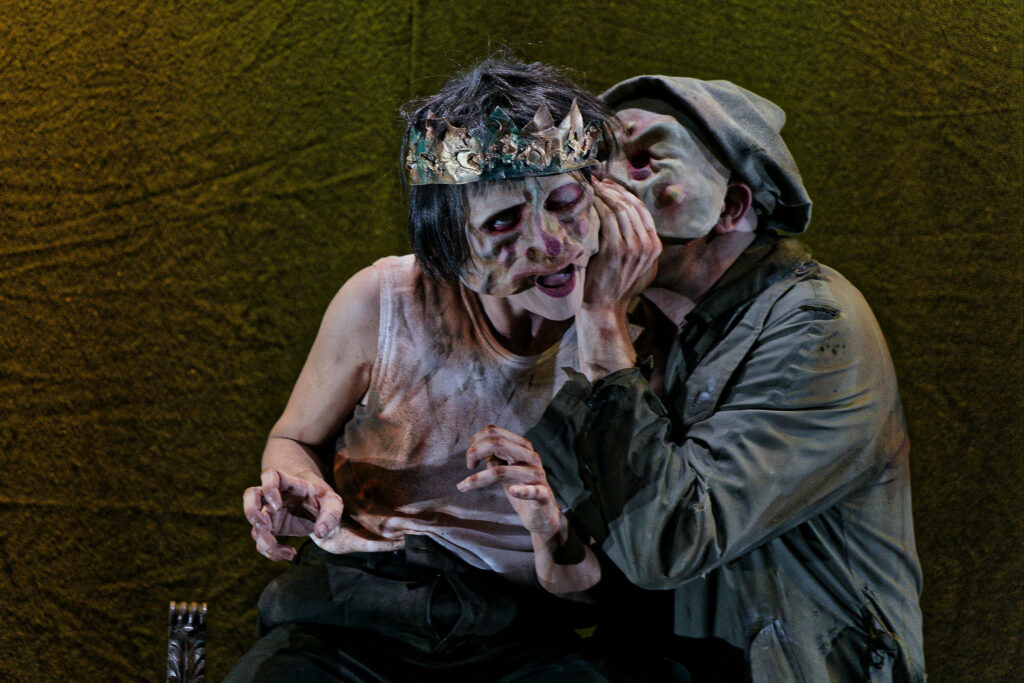
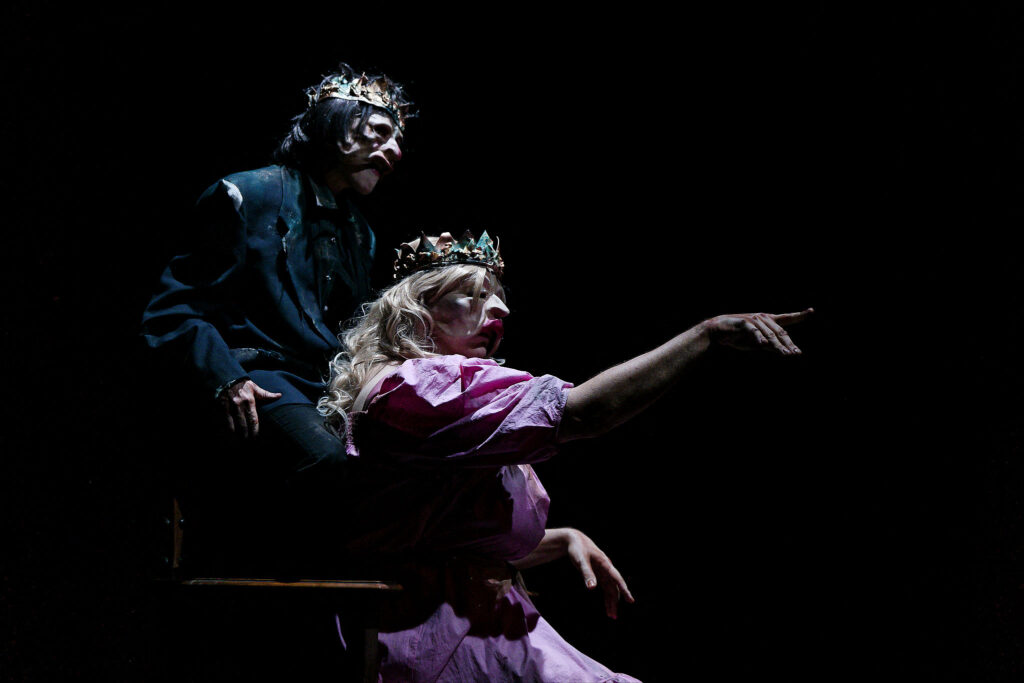
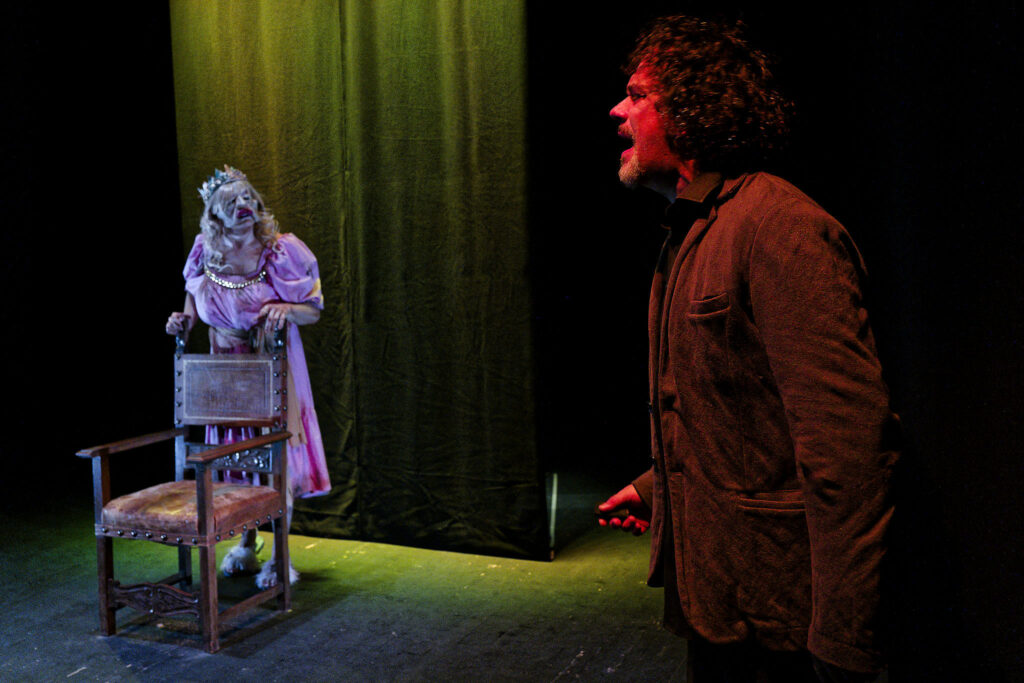
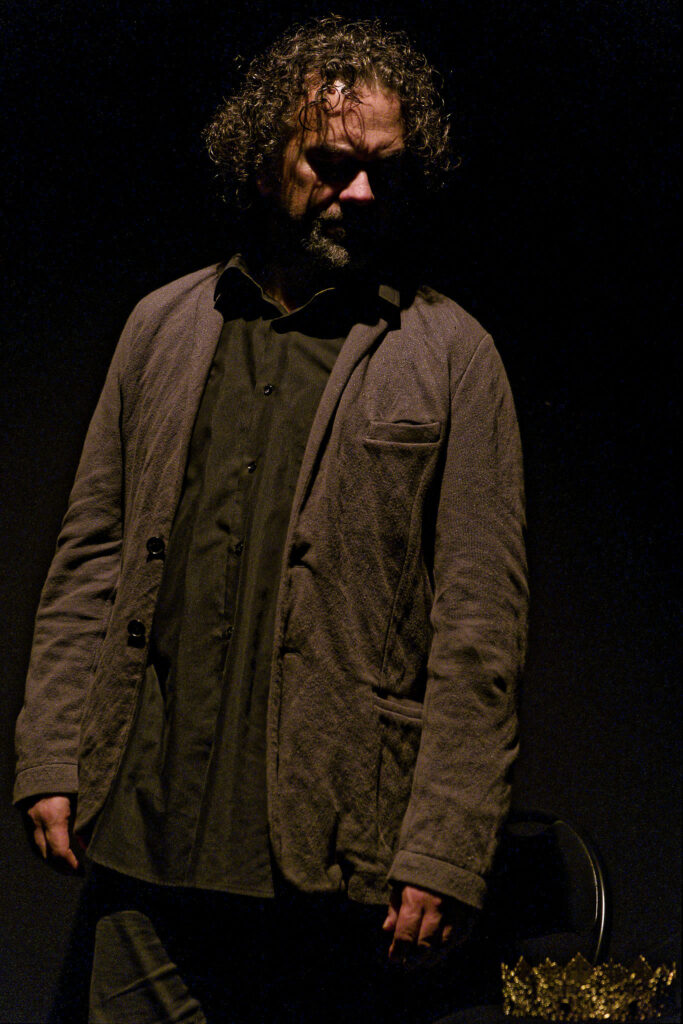
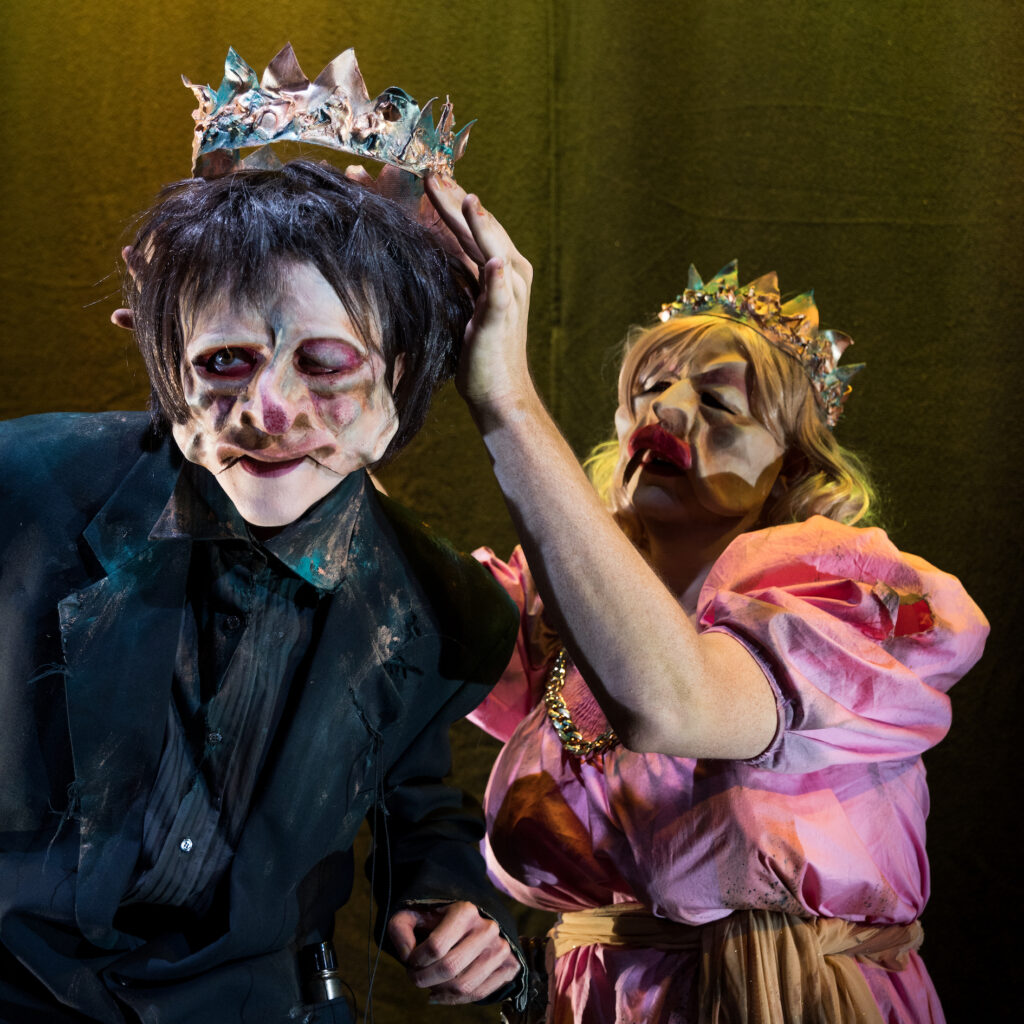
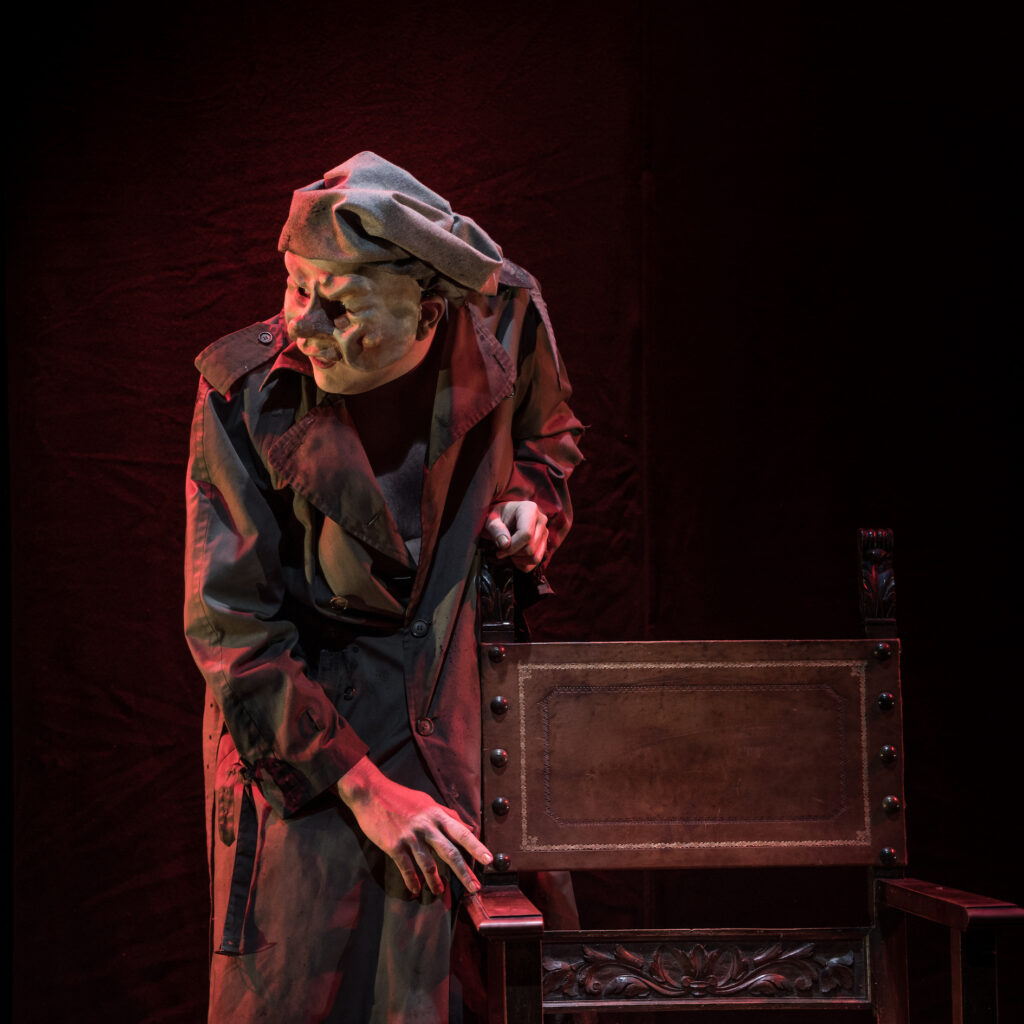
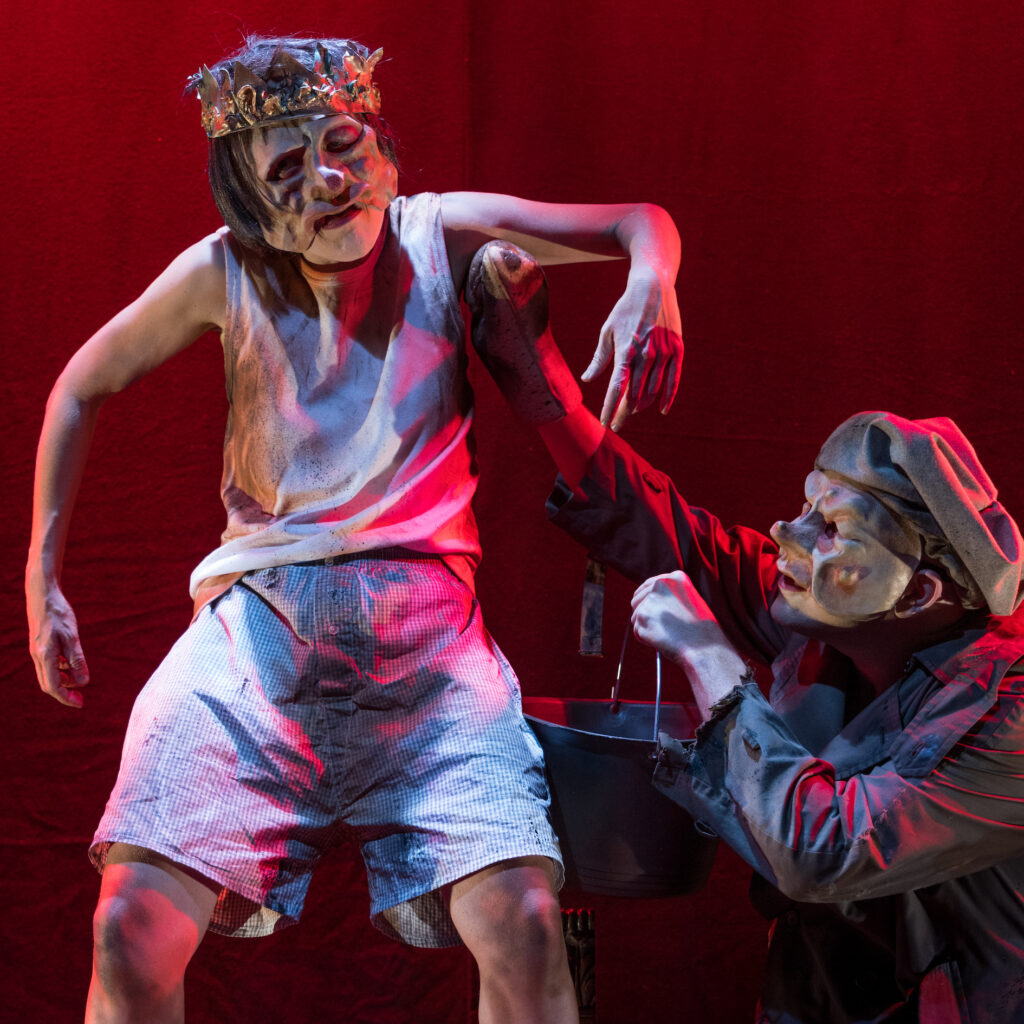
DIRECTOR’S NOTES
An ancient myth, an exciting story of conflict and betrayal, love and pain, power and hypocrisy. A too human protagonist, so human that even today we ask ourselves: “who is Hamlet?”. This character so unheroic and so full of doubts, so alone in a crumbling world, but also so sure of his own rationality that he seems crazy… Hamlet, lonely anti-hero, cocky coward, imprisoned in a rotten world from which he cannot escape, which he cannot change. Who then is Hamlet? Hamlet is us… We and our fear, we and our impotence, we and our decadence, we with our couch wars, with our revolutionary aperitifs… Hamlet is all this and much more. Hamlet may be too much for us, but his voice still reaches our ears across the centuries and his words echo in our souls like a recurring nightmare. Perhaps they are only shreds, but they speak of us.
For the masks, we started from the central idea of ‘rottenness’, especially with regard to shapes, features and colours. This prompted us to look for other materials and types of colouring than those we usually use: a work therefore also a bit of experimentation, to achieve the goals we imagined. First of all, we wanted masks in which the features could be much more subtle, to be able to play with this idea of the ‘putrid’ also through texture. In addition, as far as shapes are concerned, we wanted to be able to play on asymmetries: in particular, the masks of Polonius and the king are very asymmetrical, an exception to the custom that sees symmetry as one of the usual characteristics of masks and that made it necessary to work on finding an effective balance from the point of view of light. Applying the idea of rottenness to the forms also led us to think about the theme of disease: in the case of Polonius, protuberances and purulent swellings are visible, in the case of the king in particular the shabby appearance of one of his eyes, in the case of the queen, on the other hand, the ruined lips recall the idea of external aesthetic interventions with a disfiguring effect. Ophelia, on the other hand, has a cleaner appearance from this point of view, because in this case it was suffering and not moral corruption that disfigured her mask anyway.
Regarding the colouring then, we were greatly inspired by Lucian Freud, because we really liked his use of cold colours, particularly grey and green. From here we started to create a colour that conveys an almost cadaverous impression, a state far removed from health and vitality. So from this inspiration we created the green, the cold grey and the blue that acted as an undertone. In this way we wanted to maintain a realistic colouring for the faces, even though their shapes and lines are not at all. We were very interested in this contrast: grotesque and deformed shapes but a colouring, albeit a little grotesque, with a background of naturalness.
CREDITS
based on Hamlet by William Shakespeare
by and with
Cecilia Scrittore, Vene Vieitez and Andrea Lupo
original masks by Teatro Strappato
original music by Guido Sodo
assistant director Michela Lo Preiato
stage photos Roberto Cerè
co-production
Teatro delle Temperie and Teatro Strappato
with the support of Emilia – Romagna Region
performance not recommended for under 14s
